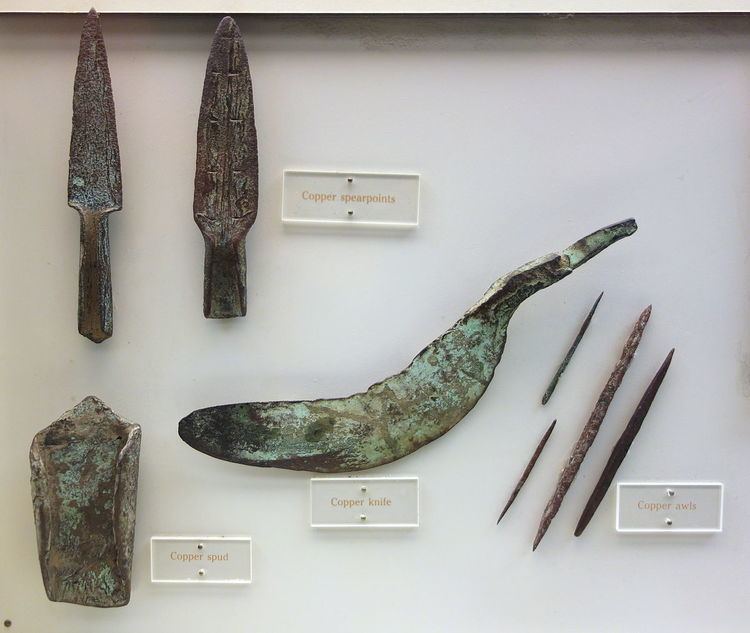 | ||
In the classification of Archaeological cultures of North America, the Archaic period or "Meso-Indian period" in North America, accepted to be from around 8000 to 2000 BCE in the sequence of North American pre-Columbian cultural stages, is a period defined by the archaic stage of cultural development. The Archaic stage is characterized by subsistence economies supported through the exploitation of nuts, seeds, and shellfish. As its ending is defined by the adoption of sedentary farming, this date can vary significantly across the Americas.
Contents
Classifications
This classification system was first proposed by Gordon Willey and Philip Phillips in the widely accepted 1958 book Method and Theory in American Archaeology.
In the organization of the system, the Archaic period followed the Lithic stage and is superseded by the Formative stage.
- The Lithic stage
- The Archaic stage
- The Formative stage
- The Classic stage
- The Post-Classic stage
Numerous local variations have been identified within the cultural rankings. The period has been subdivided by region and then time. For instance, the Archaic Southwest tradition is subdivided into the Dieguito-Pinto, Oshara, Cochise and Chihuahua cultures.
Archaic stage in North America
Since the 1990s, secure dating of multiple Middle Archaic sites in northern Louisiana, Mississippi and Florida have challenged traditional models of development, as hunter-gatherer societies in the Lower Mississippi Valley organized to build monumental mound complexes as early as 3500 BCE (confirmed at Watson Brake), with building continuing over a period of 500 years. Such early mound sites as Frenchman's Bend and Hedgepeth were of this time period; all were localized societies. Watson Brake is now considered the oldest mound complex in the Americas, preceding that built at Poverty Point (both are in northern Louisiana) by nearly 2,000 years. More than 100 sites have been identified as associated with the regional Poverty Point culture of the Late Archaic period, and it was part of a regional trading network across the Southeast.
Across what is now the Southeastern United States, starting around 4000 BCE, people exploited wetland resources, creating large shell middens. Middens developed along rivers, but there is limited evidence of Archaic peoples along coastlines prior to 3000 BCE. Archaic sites on the coast may have been inundated by rising sea levels (one site in 15 to 20 feet of water off St. Lucie County, Florida has been dated to 2800 BCE). Starting around 3000 BCE evidence of large-scale exploitation of oysters appears. During the period 3000 BCE to 1000 BCE shell rings, large shell middens more or less surrounding open centers, developed along the coast of the Southeastern United States. These shell rings are numerous in South Carolina and Georgia, but are also found scattered around the Florida Peninsula and along the Gulf of Mexico coast as far west as the Pearl River. In some places, such as Horr's Island in Southwest Florida, resources were rich enough to support sizable mound-building communities year-round. Four shell or sand mounds on Horr's Island have been dated to between 4,870 and 4,270 Before Present (BP).
Archaeological artefacts and sites dated at approximately 5,000 BP, provides evidence that the first residents of what is now the Kay-Nah-Chi-Wah-Nung National Historic Site of Canada were Archaic people. The site which is considered to be one of the "most significant centres of early habitation and ceremonial burial in Canada," is located on the north side Rainy River in Northwestern Ontario, Canada. It became part of a continent-wide trading network because of its strategic location at the centre of major North American waterways. Their mounds remain visible today.
